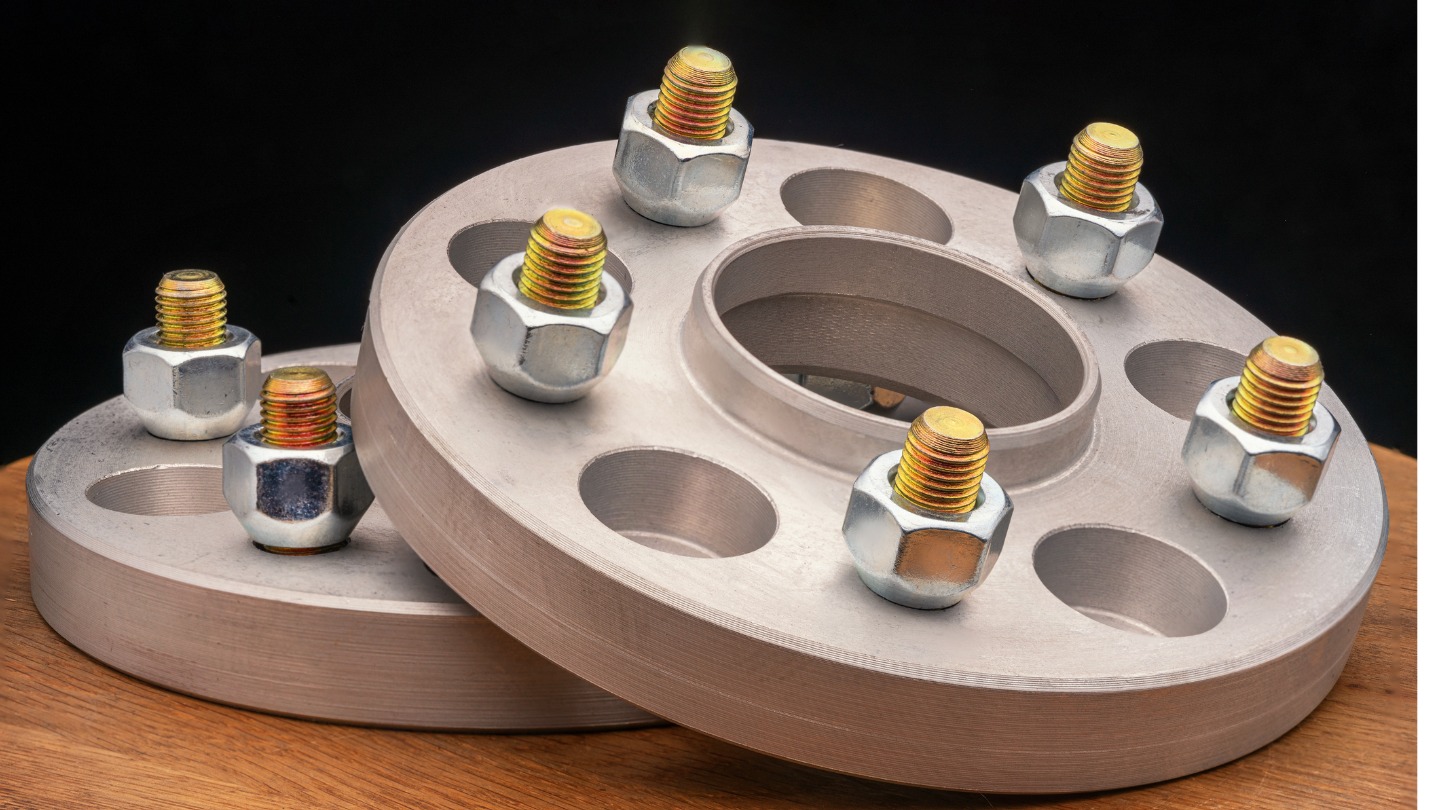What are wheel spacers and what do they do?

Quick insights
- Wheel spacers are aftermarket parts that can be installed between your vehicle’s wheel hub and the wheel itself.
- One main function of wheel spacers is to adjust how a vehicle handles.
- Wheel spacers may be installed to allow for larger tires, create a wider track and give cars a certain look.
Wheel spacers can be useful additions to a car, whether your goal is to give your car a distinctive appearance or change how it handles. There are advantages, disadvantages and other factors to consider before installing these particular parts.
What are wheel spacers?
Wheel spacers are aftermarket parts that create additional space between the vehicle’s hub assembly and the wheel itself. Typically made from aluminum or steel, wheel spacers come in various thicknesses. Installing wheel spacers on different vehicles is common among automotive enthusiasts and professional drivers alike.
How do wheel spacers work?
When installed, wheel spacers push the wheel away from the vehicle hub. This widens the track of the vehicle, as the wheels become farther apart. The installation process involves removing each wheel, fitting the spacers onto the hubs, then reinstalling the wheels with longer wheel bolts or studs. Improper installation can cause wheels to wobble or vibrate.
With wheel spacers, a car’s wheels may no longer be as flush with the siding. The tires could protrude noticeably. Depending on the thickness of the spacer and size of the tire, wheel spacers can change the look of a vehicle pretty dramatically. However, spacers have several functional effects, too.
Wheel spacers vs. wheel adapters
Here are some of the key differences between wheel spacers and wheel adapters.
- Function: Wheel spacers increase the space between the wheel hub and the wheel, widening the vehicle’s track. Wheel adapters change the bolt pattern of the vehicle hub.
- Usage: Wheel spacers can change the vehicle’s stance, provide clearance or correct an offset. Wheel adapters are used for aligning the fit of the wheels with the hub when they have a different pattern.
- Construction: Spacers tend to be thinner than adapters and have a single bolt pattern. They’re directly installed onto the existing wheel hub. Because of adapters’ thickness, they bridge the gap between the vehicle’s hub and the wheel.
Pros and cons of wheel spacers
It’s probably wise to leave opinions on the aesthetics of wheel spacers at the curb—some people like the look they can give a car, while others don’t. Here are some pros and cons of wheel spacers that focus on how they alter cars mechanically.
Pros
- Handling: By increasing the track width, wheel spacers can improve the car’s stability when taking corners. This can help with handling when driving high-performance vehicles.
- Clearance: Wheel spacers can provide extra clearance for larger brake calipers or suspension components. This can allow vehicles to accommodate larger wheels and tires, an advantage if you want to drive off-road or with a perspective that’s higher off the ground.
- Correction: In some cases, wheel spacers can help correct an offset between the wheels and vehicle hub. This may be particularly helpful when you buy a car that already has aftermarket wheels.
Cons
- Wear and damage: Depending on the size, wheel spacers can cause strain on the wheel bearings and suspension components.
- Legal and warranty considerations: In some places, wheel spacers may be regulated by state or local laws. Installing these aftermarket parts might void vehicle warranties, as well.
- Cost and complexity: Proper installation is important for a vehicle to continue operating safely. Even experienced professionals should follow the detailed instructions required to install wheel spacers properly.
When to use wheel spacers
Wheel spacers are commonly used to change a vehicle’s aesthetic. Sometimes this is taken to extremes—people can use wheel spacers and extra-large tires to create their own monster trucks.
Besides the visual customization wheel spacers offer, they’re also used for a few functional purposes. The main ones include changing how the car handles, providing more clearance for larger tires or a higher ride, and correcting offsets between aftermarket wheels and stock parts.
Are wheel spacers safe?
When installed correctly, wheel spacers can be safe. The overall safety still relies on several things:
- Quality of materials: The durability of wheel spacers’ material can reduce the risk of mechanical failures. Low quality spacers may not be able to withstand the stresses of daily driving or unforeseen situations. Most mechanical failures when driving can be potential safety hazards.
- Size and compatibility: Whether it’s for an aesthetic or corrective purpose, choosing the right size and type of wheel spacer for your vehicle is important. Using spacers that are too thick or not confirmed for use on your car can result in handling issues and increased wear on your suspension.
- Regular inspection: The wheel spacers and associated hardware should be checked regularly for wear and damage. These can be dangerous or cause additional issues with your car if they aren’t found and addressed quickly. Regular inspection can ultimately help avoid additional mechanical issues and repairs.
In summary
Wheel spacers don’t just give cars a certain look. They allow for larger tires and a wider track, changing how a car handles. Wheel spacers and adapters modify the fitment of a vehicle’s wheels, but they’re constructed differently and used for different purposes.
When considering wheel spacers, first check the sizing options, compatibility and any legal restrictions where you drive your car. Nowadays, you may even be able to digitally render what your car could look like with different wheel spacers before you buy them. Beyond all that, the safety of wheel spacers relies on proper installation and regular inspection of your vehicle.



